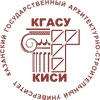About the authors
| First name, Middle name, Last name, Scientific degree, Scientific rank, Current position. Full and brief name of the organization, The organization address. | Khalikova F.R. – assistant E-mail: This e-mail address is being protected from spambots. You need JavaScript enabled to view it Kazan State University of Architecture and Engineering The organization address: 420043, Russia, Kazan, Zelenaya st., 1 |
| Title of the article | Method of determining the relative bactericidal efficiency of solar radiation on the indoor environment |
| Abstract. | Insolation is a necessary hygiene factor and one of the main criteria for assessing the quality of urban environment. Because of its high-energy solar radiation contributes to the death of pathogenic bacteria and harmful microorganisms inherent in the living quarters. However, different areas have different energy spectrum, as the highest energy in the solar spectrum has an ultraviolet (UV) portion of the spectrum in the range of from 220 to 320 nm reaches the earth's surface. Furthermore, in the UV spectrum are characteristic wavelengths whose energy varies. Thus, the maximum bactericidal effects on microorganisms have a wavelength of 254 nm, the impact energy which is taken as unity. The farther the wavelength of 254 nm in one direction or another, the less energy impact. That is, the coefficient of relative input bactericidal efficiency. For example, at a wavelength of 220 nm – 0,84, 254 nm – 1,0, at 280 nm – 0,45, 297 nm – 0,26, 320 nm – 0,02 etc. Data for the tested glass transparency for each wavelength in the range 220-320 nm allowed to develop methodology for determining the relative intensity of bactericidal effects on the microflora improvement. To implement this technique requires chart of the solar spectrum in the range 220-320 nm in a particular geographic location, the coefficients of the transparency of glass in the characteristic wavelengths and ratios OBaktE. This technique allows us to estimate the bactericidal effectiveness of the most active part of the solar spectrum, including penetration into the room, depending on the geographical point, transparency of glass and graphics of the solar spectrum in the range of 220-320 nm. |
| Keywords. | Insolation, solar spectrum, UV radiation, the relative bactericidal efficiency, characteristic wavelengths, the transparency of glass, the indoor environment. |
| For citations: | Khalikova F.R. Method of determining the relative bactericidal efficiency of solar radiation on the indoor environment // Izvestiya KGASU. 2013. №2(24) P.139-143. |















